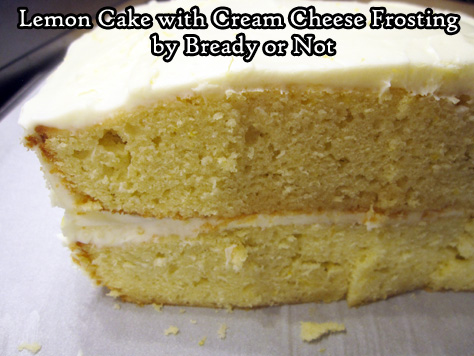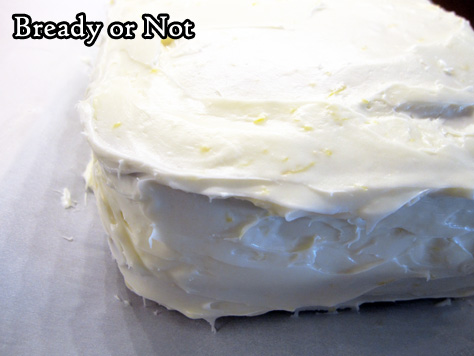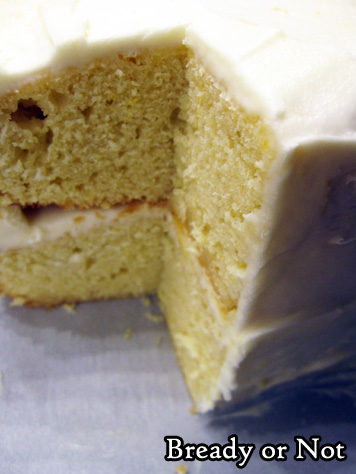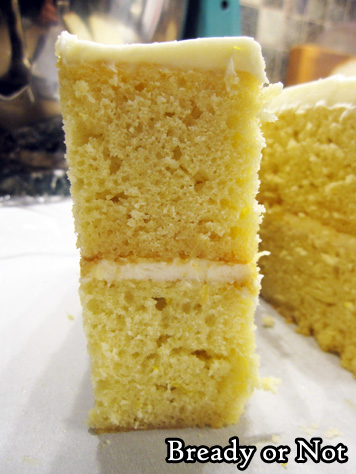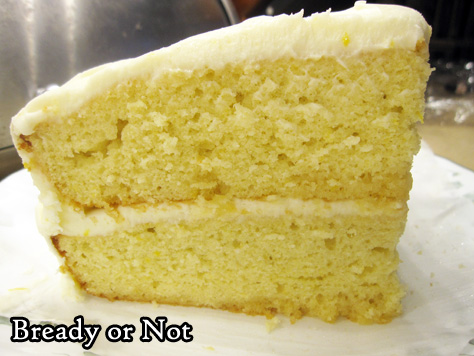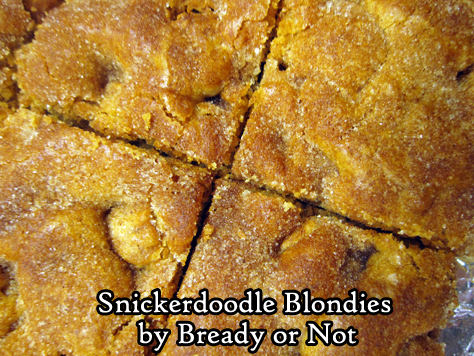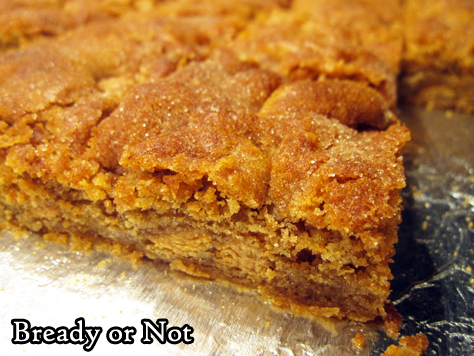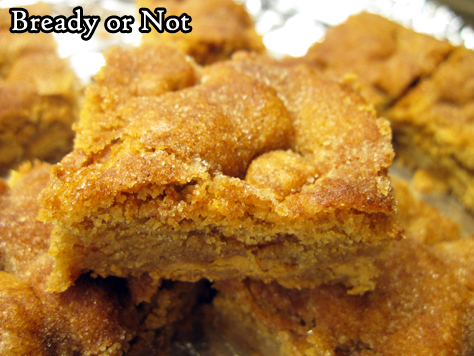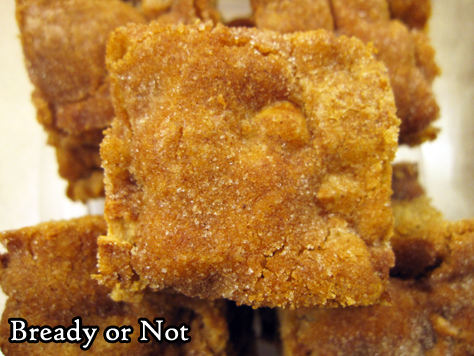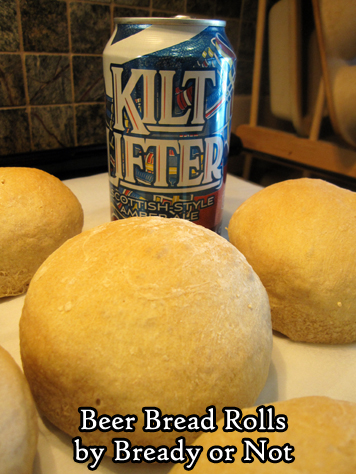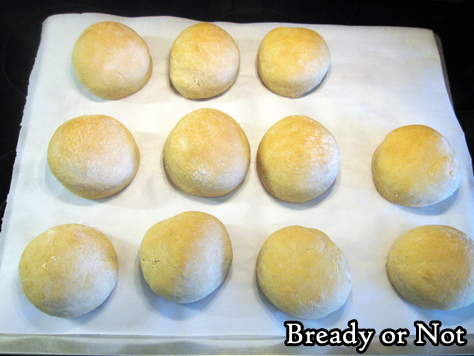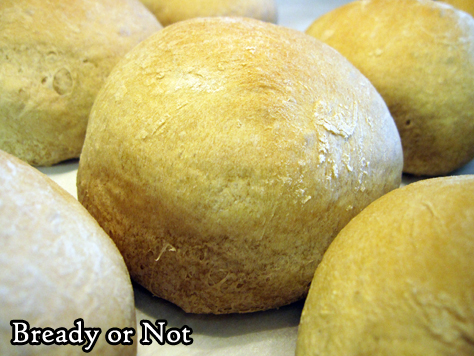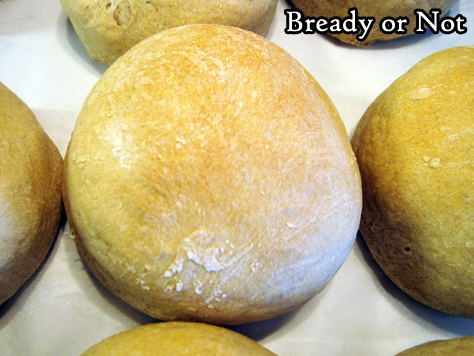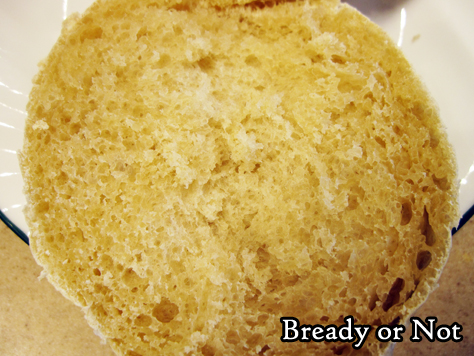Bready or Not: Lemon Cake with Cream Cheese Frosting
This Lemon Cake with Cream Cheese Frosting isn’t fancy. It’s a 9×13 cake cut in half and stacked. It has curves and straight edges. It also tastes amazing.
This is also an ideal cake for lemon-lovers. Two lemons are zested and juiced, their flavor infusing both the batter and frosting.
The cream cheese frosting here is an absolute classic, too. This is a recipe where you definitely want to lick the beaters and the bowl afterward!
I actually debated whether or not to post the cake on Bready or Not because it is so basic. After a lot of thought, though, I realized that simplicity is one of the perks.
It may not win awards for looks, sure. But does it taste good? YES.
Modified from Food & Wine Magazine January 2021.
Bready or Not: Lemon Cake with Cream Cheese Frosting
Equipment
- 9×13 pan
- uneven spatula
- cooling rack
- chopstick or skewer
- hand mixer
- parchment paper
Ingredients
Lemon Cake
- 1 3/4 cups white sugar
- 2 large lemons zested and juiced, to use for cake and frosting
- 3/4 cup extra virgin olive oil
- 4 large eggs room temperature
- 1 cup milk
- 1 teaspoon vanilla extract
- 3/4 teaspoon fine sea salt
- 3 cups all-purpose flour
- 1 1/2 teaspoons baking powder
- 3 Tablespoons honey
Cream Cheese Frosting
- 8 ounces cream cheese (1 box) softened
- pinch fine sea salt
- 1/2 cup unsalted butter (half stick) softened
- 3 cups confectioners’ sugar
Instructions
Make the lemon cake
- Preheat oven at 350-degrees. Line a 9×13 pan with foil and apply nonstick spray.
- Mix together the white sugar and 1 Tablespoon of the lemon zest; reserve remaining zest for the frosting. Using fingertips, for about a minute rub zest into sugar to deploy the inherent oils. Whisk in the olive oil followed by the eggs. Add the milk, vanilla, and salt. Keep beating until the sugar is dissolved.
- Beat in the flour and baking powder until just combined, making sure to scrape the bottom of the bowl. Pour batter into the cake pan.
- Bake for 30 to 35 minutes, until the middle passes the toothpick test. Let cake cool in pan about 10 minutes. In a small bowl, whisk together the honey and 3 Tablespoons of the lemon juice until smooth.
- Invert the cake onto a large cooling rack. Stab cake all over with chopstick or skewer. Set a cookie sheet beneath the rack. Drizzle or brush the honey-lemon mix all over the cake. Let cool for about an hour.
Frosting
- Combine cream cheese, salt, the rest of the lemon zest, and a Tablespoon of lemon juice; use rest of juice otherwise. With a hand mixer, beat on medium-high until smooth, about 30 seconds. Add the butter and beat until pale and fluffy, about a minute.
- Reduce the speed and gradually add the confectioners’ sugar. Once it’s all in, increase the speed to high and beat until fluffy, about 2 minutes.
- Transfer the cake to a parchment paper-lined cookie sheet. Use an uneven spatula to spread 1 1/2 cups frosting all over the top of the cake. Place cake in fridge to chill for 15-30 minutes. Once frosting has hardened. Slice in half crosswise and stack the halves. Spread the remaining frosting on the top and sides of cake, getting all of the odd angles, nooks, and crannies.
- Refrigerate cake, uncovered, at least 30 minutes before serving. For longer than that, cover with plastic wrap; it’ll keep well in the fridge for up to 3 days, and can also be frozen in individual slices. Serve cake right from fridge.
OM NOM NOM!
New publications for spring!
I’m staying incredibly busy these days, and publishers are keeping busy, too. I’ve had a number of new works published of late! [Note that links to Amazon are through their affiliate program.]
Short stories
- “The Recipe Keeper,” Flash Fiction Online
- “How to Hide a Unicorn,” Untethered
- “More Than Nine,” Reinvented Heart
Poetry
- Four works nominated for the 2022 Rhysling Award and included in the anthology: long form “The Bookstore” and “Follow the Meandering Path”; short form “Field Trip to See the Mermaid” and “How to Find Yourself Again”
- “Let’s Enjoy the Stars One Last Time” and “Today,” Star*Line 45.1
- “Forget That,” Star*Line 45.2
Nonfiction
- “Joy Amidst the Sorrow,” Chicken Soup for the Soul: Grieving, Loss and Healing
#SFWAPro
Read MoreBready or Not Original: Snickerdoodle Blondies (Redux)
I first shared this recipe for Snickerdoodle Blondies back in 2015, so it’s time for a re-bake and repost, with shiny new pictures of these delicious things!
These are thick, soft, and chewy bars, packed with snickerdoodle flavor. The top is crowed with cinnamon and sugar.
Oh yes, and through the tender crumb are sporadic caramel chips–or cinnamon chips. This recipe is fantastic using either, or both. They add extra oomph without being overkill.
The recipe makes a big 9×13 pan, so this is a good recipe to feed a crowd!
Bready or Not Original: Snickerdoodle Blondies (Redux)
Equipment
- 9×13 pan
- aluminum foil
Ingredients
Blondies
- 1 cup unsalted butter (2 sticks) room temperature
- 2 cups brown sugar packed
- 1 Tablespoon vanilla extract
- 2 large eggs room temperature
- 2 2/3 cups all-purpose flour
- 1 teaspoon kosher salt
- 1/2 tsp cream of tartar
- 1 teaspoon ground cinnamon
- 2 teaspoons baking powder
- 10 ounces caramel chips or cinnamon chips
Topping
- 2 Tablespoons white sugar
- 2 teaspoons ground cinnamon
Instructions
- Prepare a 9×13 pan by lining it with aluminum foil and applying nonstick spray. Preheat oven at 350-degrees.
- In a large bowl, cream together the butter, brown sugar, and vanilla extract. Add the eggs one at a time.
- In a separate bowl, sift together the flour, salt, cream of tartar, cinnamon, and baking powder. Gradually add the dry mix into the wet bowl. Once everything is mixed, add the bag of caramel or cinnamon chips.
- Evenly spread the dough into the prepared pan. In a small bowl, mix the sugar and cinnamon. Sprinkle the mix over the dough.
- Bake for 30 to 40 minutes, until toothpick inserted in center comes out clean. Cool completely. Use the foil to lift out the contents and cut into bars. Store at room temperature. They will keep well for a few days if kept sealed.
OM NOM NOM!
Bready or Not Original: Bread Machine Beer Bread Rolls
Your home bread machine makes delicious carbs super-easy with these Bread Machine Beer Bread Rolls!
First things first: the type of beer. You could try this with any number of beers, but I suggest a darker one. I’ve tried this with Kiltlifter (a major local beer in Arizona) and also Guinness. Guinness definitely created rolls that were darker with a deeper flavor. I have not tried this with a nonalcoholic beer.
Really, choose a beer that will go well with the meal. Don’t worry about alcohol amounts in the final product, either. It’ll burn off in the baking process. Also, you don’t have to like beer to like these rolls. I do not like beer (seriously, I really do not like beer) but I do enjoy the hoppy flavor it imbues in this bread!
A food scale will be an immense help in creating like-sized rolls. I’ve used this recipe to make medium-sized rolls, good for a butter-lacquered side dish, as well as big rolls suitable for BBQ-sauce shredded pork or other heaped-on fixings.
The rolls are fantastic fresh and will keep fine for a few days, and they are great to freeze. If you freeze them soon after they come out from the oven, they will taste just that fresh when you later thaw them!
Bready or Not Original: Bread Machine Beer Bread Rolls
Equipment
- bread machine
- food thermometer
- food scale
Ingredients
- 12 ounces dark beer such as Kiltlifter or Guinness
- 1/2 cup water
- 1 1/2 teaspoons sea salt
- 4 to 4 1/2 cups bread flour plus more for dusting
- 1 1/2 teaspoons instant dry yeast
Instructions
- This may be a travesty for some, but place the beer and water in a large microwave-safe dish. Give the liquid a brief zap in the microwave to raise the temperature to 100 to 110-degrees. Place in the pan of the bread machine. Add the salt, 4 cups bread flour, and yeast. Start the machine on the dough setting.
- Check on the dough as it begins mixing. If your bread machine allows, as the cycle is on-going, add more flour if the dough looks too loose, or add a touch more water if it is too dense and lumpy.
- When the cycle is done, weight the dough and do the math to divide into rolls of desired size. Prepare a large baking sheet with parchment paper. Divide the dough with the help of the food scale, shaping and smoothing each piece into a roll. Set spaced out on sheet.
- Cover dough balls with plastic wrap or towels and set in a place to rise, 30 minutes to an hour.
- Preheat oven at 350-degrees. Remove cover from dough and baking sheet. For medium rolls, bake for around 24 minutes; for larger rolls, bake for about 28 minutes. Check for doneness by tapping rolls and listening for a hollow sound, or plunge the food thermometer into a discreet place to verify the temperature in the middle if above 190-degrees.
- Cool at least 20 minutes before eating. Rolls will keep in a sealed bag at room temperature for up to 2 days, and can also be frozen to enjoy much later.





